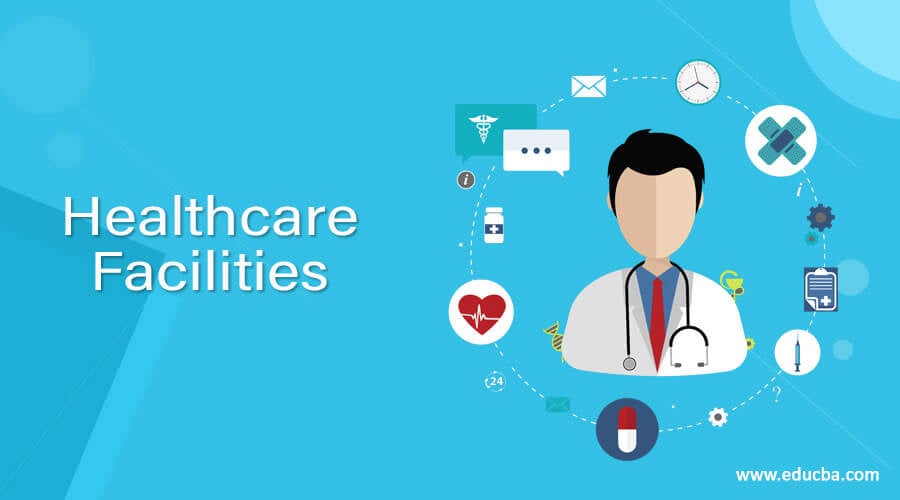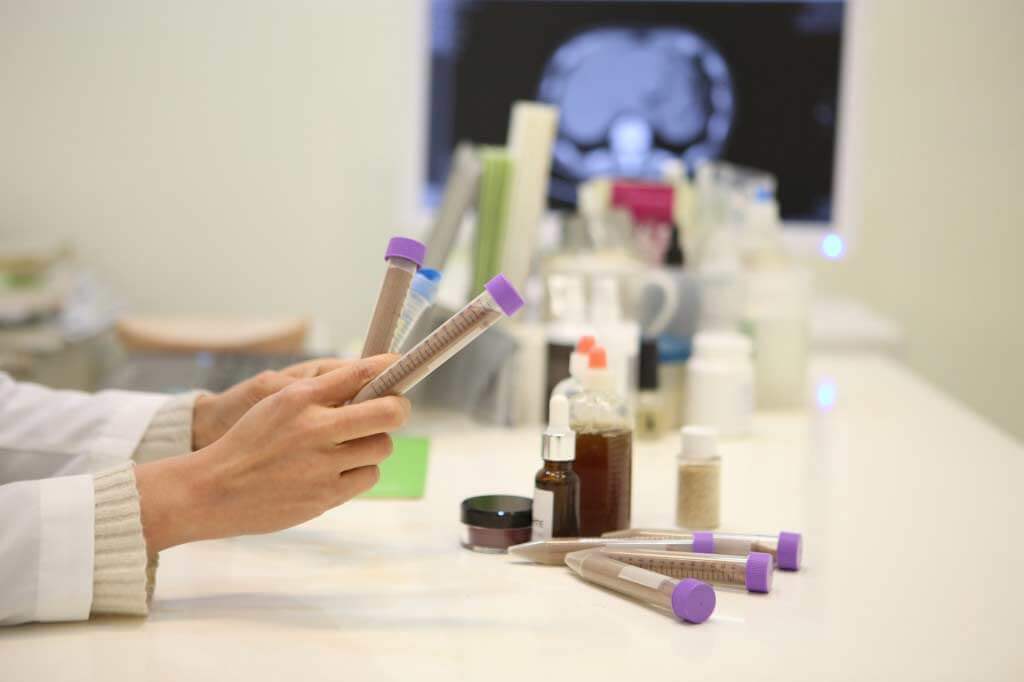
Introduction to Healthcare Facilities
The healthcare facilities industry plays an important role not just in people’s lives but also in the economies of countries worldwide. Because of advancements in healthcare facilities, people are living longer and healthier lives. In fact, due to this, children can attend schools regularly and therefore gain a good education for themselves. This has also resulted in new mothers being able to care for themselves, thereby reducing maternal mortality by nearly half over the past two decades.
Health is rooted in the daily lives of human beings. It is in many ways connected to a lot of things, like having access to basic amenities like food, water, and other such necessities. For instance, if children have to travel thousands of miles to fetch water or become ill due to a lack of immunization resources, it will affect their health and not be able to gain an education. The pursuit of an associate degree in health science equips individuals with the foundational knowledge and skills needed to address such systemic health challenges, empowering them to contribute effectively to the improvement of community health outcomes through various roles in healthcare provision and advocacy.
If the men in the family become sick, they cannot provide livelihood and sustenance to their families. In addition, if mothers who have just given birth die, more often than not, it is followed by the death of their children. Therefore, good health is a prime element for the betterment and growth of the family, which is the building block of societies and countries worldwide. That is why governments of all countries across the globe are always striving to eradicate barriers to health so that individuals can focus on things that matter, including education, livelihood, building a good home and secure future, and making use of all opportunities to realize their true potential and capabilities.
Today health plays an important role, not just within a country but also in the case of a global scenario. With businesses and brands expanding rapidly, globalization is one of the current realities today. In short, the world is today a global village. At the same time, this may spell good news for the growth and advancements of economies, on the one hand. While on the other hand, this has allowed infections, even those resistant to common antibiotics, to spread worldwide in less than 72 hours. Therefore, global health and well-being is a major concern for governments and economies worldwide. This is something that the entire world has to come together to solve and is not the sole responsibility of a single country or governance.
In the last decade or so, Big Data, with its immense growth potential and development opportunities, has swept the entire world. This is not surprising given that many data sets are produced by brands, companies, organizations, government institutions, educational places, and even individuals daily.
In nearly a decade, the amount of data generated around the globe grew by millions and trillions. In 2012 alone, almost 2.5 quintillion terabytes of data were created daily, and according to reports, the amount of data that the world sees in two days is more than the amount produced in 2013. While many sectors, like IT and manufacturing, have successfully employed Big Data tactics and techniques to get ahead of their competition, the healthcare facilities industry still has a long way to go. It is still in its infancy and growing years.
Many providers and investors are keen on helping the healthcare facilities industry expand using their analytical capabilities. This sector still has a long way to go, mainly because the healthcare facilities industry is extremely dynamic and evolving rapidly every second. Thus, integrating healthcare facilities and Big Data can forever change how we view health, which is a very good sign for the days to come. Here are some important elements in the case: the healthcare facilities industry has to realize its growth potential in the field of Big data analytics.
Integrating data and making it uniform across all challenges will be a big challenge and foremost challenge: Brands and companies, including political campaigners, have been successful in using various data sources to acquire information and details about the lives of their customers, clients, and citizens. This, in turn, has helped them to create and implement new strategies that are effective, engaging, and creative. Similarly, linking and leveraging data about healthcare facilities has the potential to help overall health standards by identifying effective treatment methods for patients.
One of the biggest challenges in achieving standardization in the healthcare facilities industry is the lack of consistency in medical record software. This is because a lot of data exists in the medical field that is available in many different forms and types. Some of them include doctor’s notes within medical records, insurance claims, images from scans of patients, social media conversations related to health, and information from devices that include wearables and other similar devices. Patients can now easily get a private scan to access and share their medical imaging data securely, contributing to the diverse data landscape.
Besides this, the community of data collectors is equally unique and varied, making the integration process challenging. With so many people like providers, payers, employers, disease management companies, wellness facilities, and personalized genetic testing companies, coupled with social media, are all in some way or other collecting information about the health of patients. Additionally, patients are a source of a lot of information, making the process a step more difficult and demanding.
As this task requires immense coordination and management, it cannot be the exclusive responsibility of a single organization. It would require tremendous cooperation and top-level management from the private and public sectors. In line with this, the National Institutes of Health introduced a Big Data to Knowledge Initiate aimed at helping the biomedical research team access, manage, and utilize Big Data in a bigger and better manner. By bringing together various elements of the healthcare facilities sector, including academic institutions, healthcare systems, life science companies, and advocacy organizations, data integration might soon become a reality for various countries and economies.
Create new forms of data that can help solve the world’s biggest medical issues and concerns. One of the initial benefits of Big Data was that it was useful for generating important and valuable insights that would, in turn, help companies implement successful campaigns and solutions capable of addressing big challenges and reaching goals effectively. By integrating data and deriving valuable insights, the healthcare facilities industry can provide patients with much care and information, thereby ensuring better recovery and well-being.
In addition, they can also help healthcare facilities professionals to predict situations better and intervene in serious and critical situations, saving lives effectively. These predictions, in turn, can help the sector to improve the quality of care provided to patients and improve facilities in areas that include readmissions, treatment optimization, and identifying worsening health states at an early stage, among other things.
Another extremely important area is making new knowledge methods viable and constructive. One of the reasons why healthcare is behind many other industries is that it has failed to utilize new ways of gaining important and valuable information. The retail sector has effectively used Big Data analytics to gain valuable insights, thereby addressing the concerns and demands of the customers, clients, and stakeholders in a profitable manner. In this regard, the healthcare wellness sector has a long way to go to reach the same stage.
Hospitals are now waking up to the use of Big Data. They are effectively making use of techniques like graph analytics through which they can analyze the relationships between complex variables that include results of labs, the interaction of nurses in BSN programs, history of patient’s family, diagnosis, and patient survey to effectively notice and identify patients who are at risk of lapsing into serious conditions. With this knowledge and by recognizing patient patterns, hospitals can effectively treat a patient before they become worse and save resources, both in terms of medical care and time.
Another area where Big Data can help the healthcare facilities industry is through natural language processing and artificial intelligence methods. Though currently, they are only helpful in creating unstructured text data found in doctor’s notes, medical notes, and social media, they can perform even more complex functions and duties.
As artificial intelligence in computers and desktops become a big reality, hospitals have immense potential to learn more about disease, especially those suffering from rare diseases. For example, at the Mayo Clinic, in collaboration with IBM’s cognitive computer called Watson, clinical trials are being analyzed for patients that best suit the situations. This will eventually be a big leap for the healthcare facilities industry in the coming years.
The final hurdle lies in translating all the insights gained into practice: Standardizing data collection methods and using analytical techniques to gain insights from them are no doubt important, but the final and most hurdle challenge will eventually be the practical application of all this data. This is because healthcare wellness is not like another industry solely based on profits, but an important aspect is the patients’ well-being and welfare. Privacy and patient data protection come into play here, and once again, standardization is the answer to widespread concerns. For instance, using Updox HIPAA-compliant fax solutions ensures that health records can be shared securely without putting the private details of patients at risk of exploitation or inconveniencing those responsible for gleaning analytical insights.
The healthcare facilities industry cannot progress in the right direction without this achievement. That is why the practical application of these insights poses a unique challenge to almost every person that is in any way involved with the healthcare facilities industry. From doctors to patients to policymakers, they must be engaged in every step of how Big Data can help improve the recovery process faster and smoother.
Insights from Big Data can diversely impact healthcare wellness. From the evidence of the safety and effectiveness of treatments across the board to diagnosing, treating, and delivering exceptional care, Big Data can make healthcare wellness a big and better asset to all the companies and individuals associated with it. Unless every part of the research team clearly knows how to translate the required knowledge into practice, the entire endeavor might be futile.
Adopting Big Data will make the future of healthcare wellness better and more secure than any other method or medium.
Today, people worldwide are suffering from many chronic conditions, and in such cases, care and rehabilitation can become expensive procedures. Big Data can help address this concern as, with time, the techniques and data used within the healthcare facilities industry can become cost-effective, enabling people across the population to avail better healthcare facilities. After understanding the need to adopt Big Data, healthcare wellness can go a long way in using the data to create better patient care and conduct research that can save the lives of countless people.
The healthcare industry today stands on the verge of great change and advancement. None of the above insights and advancements will be possible without a continued focus on developing Big Data techniques that can be used specifically by the healthcare wellness sector. By developing innovative strategies and tools, the healthcare industry will have to bring together financial, clinical, and socioeconomic elements to create better methods to cure and transform the lives of patients worldwide.
Usage of Software in Healthcare
Since the beginning of the industry, healthcare professionals have been using softwares. The earliest examples of softwares in healthcare were simply spreadsheets and databases, which were used to keep track of patient information and help doctors manage their practices.
As technology advanced and became more accessible, the healthcare industry also started using software in many areas, including clinical research and financial management. Today, practitioners can even use a full-blown health and human services platform to oversee all aspects of their operations, from creating customizable plans for patients to managing billing and reporting. And, of course, this software gets better by the year as new features arrive, such as online reputation management tools specifically designed for doctors, which help them maintain trust and transparency with patients in a digital-first world.
Now, experts use all-in-one platforms to handle everything from patient plans to billing. These platforms also include revenue cycle management services to boost financial efficiency.
Healthcare Wellness Summary
A better and good level of healthcare wellness is key to human well-being and happiness. It directly affects economic and societal progression, and a healthy population automatically results in happier and more productive lives. And Big Data has the potential to help countries around the world to realize this goal effectively. The healthcare wellness industry is a big field. By continuously investing in better methods and techniques, such as massage therapy, this industry can reach new growth levels, helping society be healthier, stronger, and fitter.
Recommended Articles
This has been a guide to the healthcare facilities industry playing an important role not just in the lives of people but in the economies of countries around the world. These are the following external link related to healthcare facilities –


